DISTRIBUTED INFORMATION-ANALYTICAL AND CONTROL SYSTEMS
Named after I.V. Prangishvili
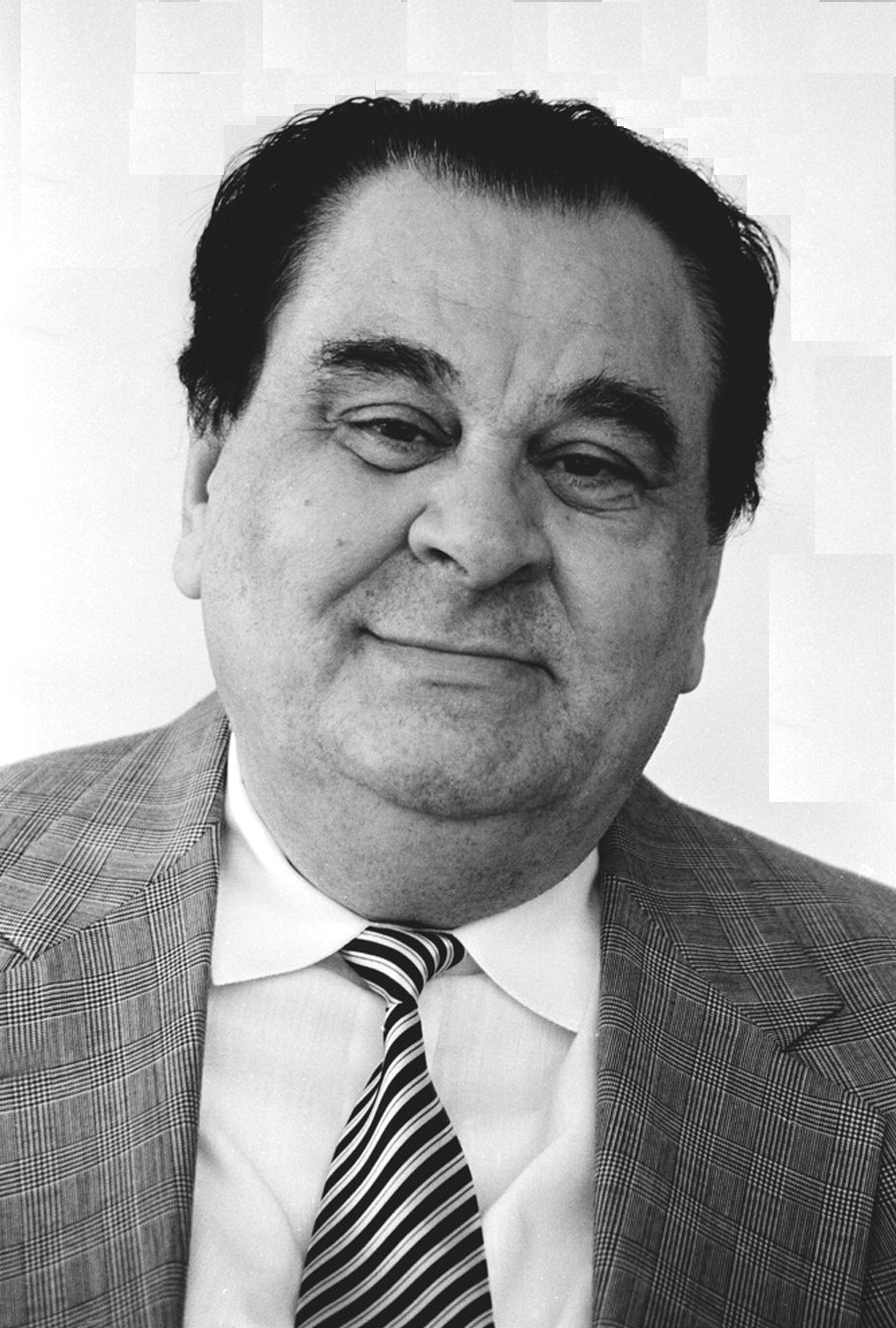 |
|
Iveri V. Prangishvili, Founder and first Head of Laboratory No. 31 |
Laboratory No. 31 was established in 1964. The first Head was Iveri V. Prangishvili, in future Doctor of Engineering, Member of the Georgian Academy of Sciences, and Professor. He held the post until February 2006.
Prangishvili was a major scientist in the theory and design of control processes and systems, informatics, and computer engineering. In 1969, he defended his doctoral dissertation on the design principles of homogeneous structures for logical and computer devices. In 1970, he was appointed Deputy Director for Research of the Institute; in 1987, Director of the Institute.
Prangishvili proposed a new promising direction of building elements and nodes of control and computing systems based on homogeneous microelectronic structures (HMSs) functionally adjusted to solve problem-oriented tasks.
In 1972, the Institute and the Tbilisi Research Institute of Automation Means (the USSR Ministry of Instrument-Making) started developing PS-300, the first computer on the homogeneous adjustable environment. Its processor was based on a homogeneous adjustable structure to implement a wide range of data processing operations. The PS-300 machine language implemented vector data processing commands in the machine and used pipeline data processing (in future Dr. Sci. (Eng.) V.D. Malyugin and Cand. Sci. (Eng.) A.I. Ivanov).
Later on, the PS-300 computer was extended to a control computing complex serially produced by the NPO ELVA (Tbilisi). A new version of such complexes, PS-300 Micro, was released with orientation to input-output multiprocessing (A.I. Ivanov). The pilot operation of PS-300 Micro was carried out in the non-ferrous metals and alloys injection molding production in Odessa.
The subsequent development of HMSs under Prangishvili’s leadership (Dr. Sci. (Eng.) I.L. Medvedev, Cands. Sci. (Eng.) Yu.S. Zatuliveter and E.A. Fishchenko, and in future Dr. Sci. (Eng.) S.Ya. Vilenkin) resulted in the creation of PS-2000, high-performance multiprocessor computing systems with a reconfigurable structure to solve vector-matrix problems of large dimension. Such systems are required for processing geophysical information, real-time images, various data from artificial satellites, meteorological, acoustic, and radar information.
In 1981–1988, the Research Institute of Control Computers (the USSR Ministry of Instrument-Making, Severodonetsk) jointly with the Institute produced a series of 242 computing complexes PS-2000.
Based on PS-2000, an industrial expeditionary computing complex was created for in-depth data processing during the seismic survey of oil and gas fields (The All-Union Research Institute of Geophysics, V.M. Kreisberg). Several PS-2000 complexes were used to create high-performance, up to 1 billion operations per second, real-time hydroacoustic data processing systems (in future Dr. Sci. (Eng.) I.I. Paishev).
In 1982–1997, several PS-2000 complexes were exploited at the Mission Control Center (MCC). They were equipped with a real-time telemetry data preprocessing system.
In 1989–1991, the PS-2000 architecture line was developed within the projects of the USSR State Committee for Science and Technology: the possibilities of building multiprocessor architectures on a single VLSI chip were studied (I.L. Medvedev, Yu.S. Zatuliveter, E.A. Fishchenko, and V.A. Krotov). It was the first world project on the VLSI-deployment of highly parallel architectures. Due to outrunning progress of VLSI mass production technologies, the proposed architectural and technological solutions have growing significance.
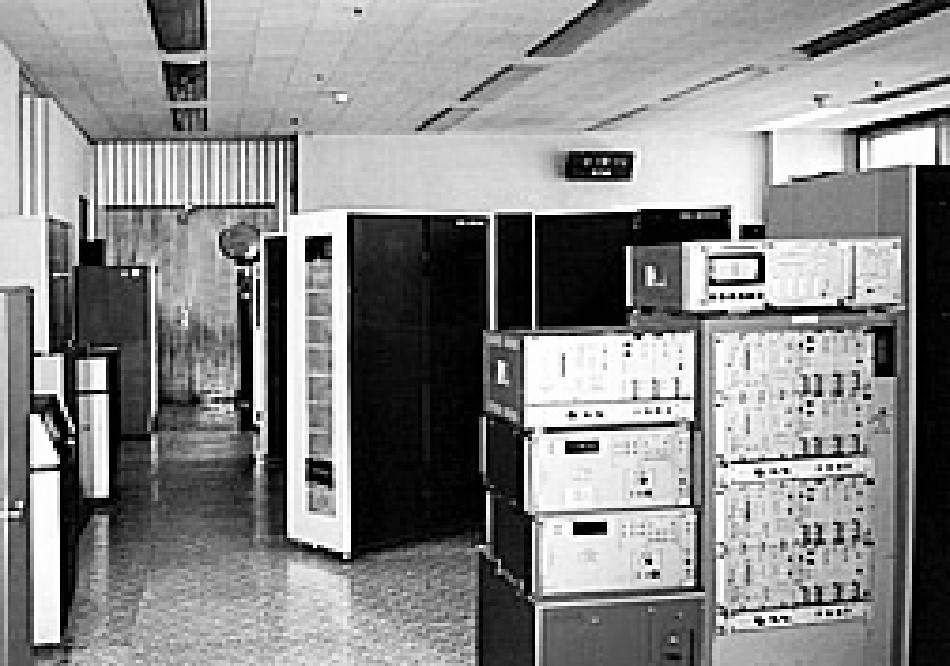 |
|
PS-2000 in the MCC (dark stands in the background) |
Computers of the PS-2000 line were an example of combining the current demand for forward-looking ideas and their full-scale implementation using domestic technology.
At that time, V.V. Ignatushchenko (in future Dr. Sci. (Eng.) and Dr. Sci. (Eng.) E.A. Trakhtengerts from Laboratory No. 46 developed PS-3000 computing systems with multiple instruction streams and multiple data streams. Such systems are intended for data processing at the upper levels of complex hierarchical control systems requiring high performance. The first machines were produced by the Research Institute of Control Computers (Severodonetsk) only in the second half of the 1980s. Their improvement and further production were stopped due to the changes in the country.
In the mid-1990s, Russia’s nuclear industry began entering the world market. Several countries (Iran, India, and China, to name a few) showed interest in purchasing domestic power units with light water reactors of the VVER-1000 type. There was an objective need to create automated control systems (ACSs) for the upper-unit industrial processes in nuclear power plants (NPPs). Automated process control systems (APCSs) for NPPs must implement monitoring, control, and technical diagnosis algorithms, a representation system for NPP safety parameters, a detection system for important operating parameters, and other mandatory functions in accordance with the International Atomic Energy Agency requirements.
The creation of a fundamentally new upper-unit control system for NPPs was entrusted to the Institute. Director I.V. Prangishvili managed the works, and the responsible executors were Cands. Sci. (Eng.) (in future Drs. Sci. (Eng.) M.A. Zuenkov and A.G. Poletykin).
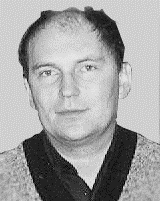 |
|
Mikhail A. Zuenkov |
A mathematical apparatus was proposed to create software systems based on fuzzy set logic. Also, the ABIS programming language, rule generation programs involving data modeling of complex technological processes, and fuzzy knowledge bases for qualitative modeling were developed. The new information technologies developed can be used in various fields, including the fuel and energy complex, chemical, and other industries.
As a result, an APCS for NPPs was developed. It contains an integrating part, i.e., an upper-unit computing system that centralizes information flows and provides the operating personnel of NPPs with convenient, reliable, and fast control means.
 |
|
Control panel for NPPs with the upper-unit control system developed in the Institute |
The new information technologies were used to develop the Operator system (monitoring, control, and technical diagnosis) for APCS for NPPs. The system includes an operating system, a SCADA system, a CAD system, and several software complexes for the development, implementation, training, and maintenance of complex distributed information-computing and control systems. Analysis methods were developed for deterministic queueing systems to find the limit time characteristics of APCSs for NPPs (Cand. Sci. (Eng.) V.G. Promyslov).
In his last years, Prangishvili was engaged in system research of control problems, trying to identify system regularities in natural and social systems. He formalized the occurrence of conflicts and crises in the society control system and studied the ways to mitigate their consequences. He also developed a methodology for assessing the complexity of different-nature control systems and the ecologization of science and technogenic systems. Several restrictive regularities were proposed: their proper consideration in the control process increases the effectiveness of conflict damping and minimizes the probability of crises.
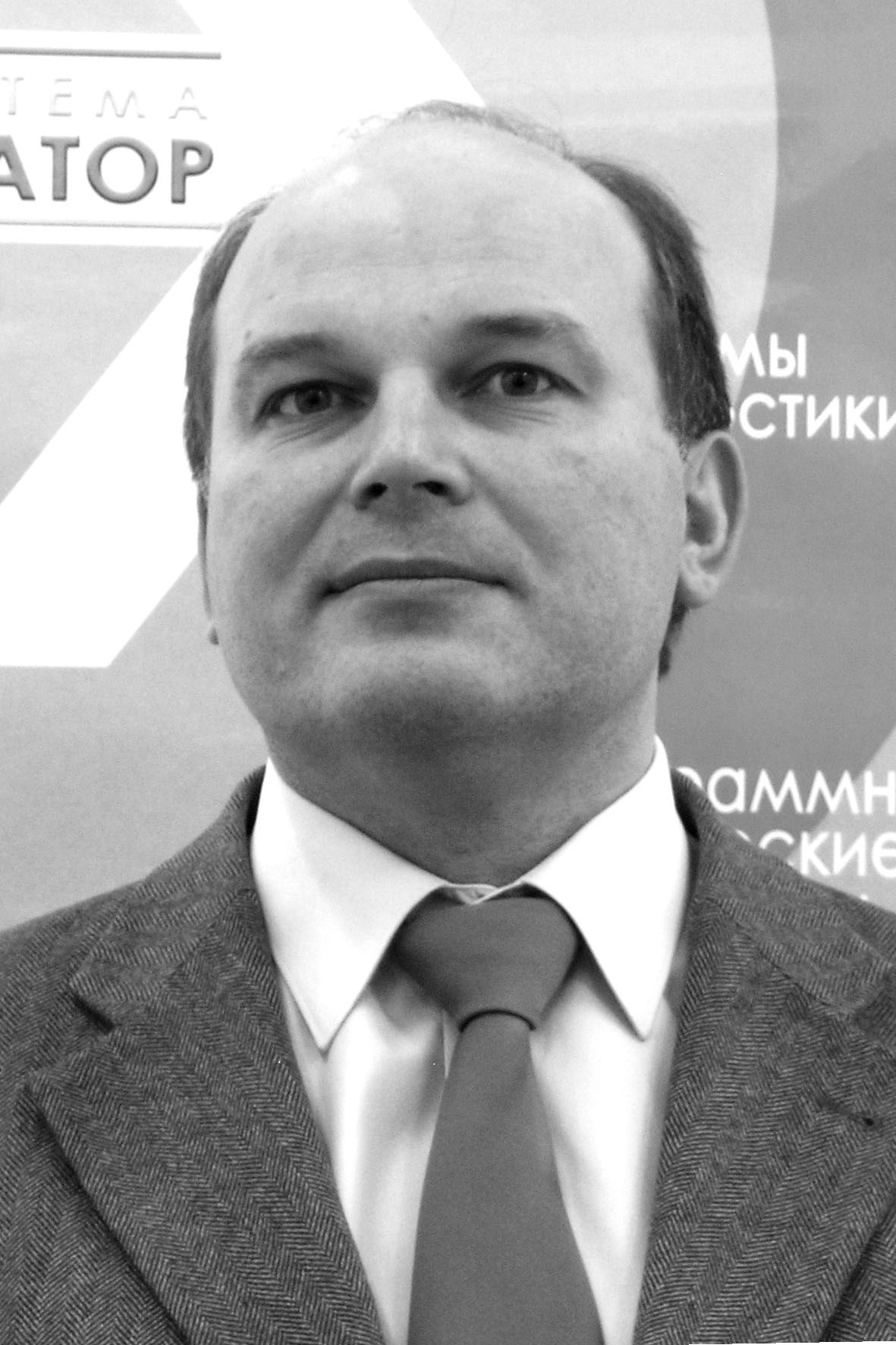 |
|
Alexei G. Poletykin, Head of Laboratory No. 31 |
Since the middle of 2006, the Laboratory has been headed by Alexey G. Poletykin, Dr. Sci. (Eng.), working there starting from 1983. At present, the Laboratory staff consists of 42 employees, including 2 Doctors of Engineering and 9 Candidates of Engineering.
The Laboratory continued research activities in the following areas: new models, construction means, and control methods for distributed automated control systems (ACSs); new structures and network information technologies for process control, including control of critical objects (ACSs for nuclear power facilities, control of stationary and mobile marine objects, control of power facilities, and environmental monitoring systems).
The new information technologies were used to develop the Operator system (monitoring, control, and technical diagnosis) for APCS for NPPs. The system includes an operating system, a SCADA system, a CAD system, and several software complexes for the development, implementation, training, and maintenance of complex distributed information-computing and control systems. The first priority was given to cybersecurity at all stages of the system lifecycle (in particular, APCSs for NPPs). The corresponding scientific results were implemented in the active APCS for NPPs.
The ongoing works provide a comprehensive approach to constructing large-scale, highly efficient information-control and computing systems with tough energy efficiency and cybersecurity. The main software complexes of APCSs for NPPs passed certification and received approval for use in the nuclear power industry and safety-critical systems.
Currently, the Laboratory conducts research in the following main areas:
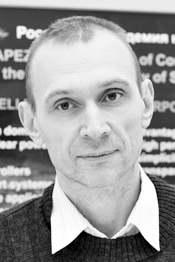 |
|
Vitaly G. Promyslov |
• A theory and new technologies for designing distributed information-control systems for high-risk objects. Great importance is given to the methodology of information (cyber) security of digital control systems of power facilities (A.G. Poletykin and V.G. Promyslov).
• A concept, design principles, methods, and algorithms for highly reliable cyber-secure information-control systems (ICSs) based on cognitive threat monitoring methods (A.G. Poletykin).
• Methods to ensure the cybersecurity and cyber stability of ICSs for critical objects. Cybersecurity policy and corresponding formal models. A methodology for assessing and ensuring the cybersecurity of ICSs, including possible designs of an external tracker for ICSs to assess risks and damage from cyber attacks. Analytical tools and means to model the information security of ICSs in order to evaluate cybersecurity and improve the protection of ACSs for critical objects against cyber attacks as well as find vulnerabilities in the existing systems of this class (A.G. Poletykin and V.G. Promyslov).
• Structural and functional analysis and critical assessment of the existing and successfully operating APCSs for NPPs of the 1st generation. Upper-unit control system standards were analyzed, and new requirements were formulated for the 2nd generation of such systems. The requirements should be fully implemented using Industry 4.0 technologies. Ways of protection against cyber threats were analyzed. An extended discretionary access right model (the take-grant model) was proposed to formalize the cyber security of ACSs for critical objects (A.G. Poletykin and V.G. Promyslov).
• Networked expert activity (NEA), widespread in the current era of globalization and digitalization. NEA develops new ideas to translate them into competitive products. A good example is DigitalCatapult, a corporate activity environment for numerous companies and organizations, technicians, creatives, and business and academia representatives. The contemporary solutions in the NEA hardware support are hyperconvergent systems implementing the IT as a service (ITaaS) principle. Therefore, it becomes topical to develop NEA applications within ontological engineering that supports applied customization at the level of content, context, and discourse management services. This problem is considered for monitoring applications based on the Internet-of-Things, social networks, and total web registration systems for all stages of all-kind activities of individuals and legal entities. The proposed approach involves big data processing standards in the NEA loop (I.A. Stepanovskaya).
 |
|
Yuri S. Zatuliveter |
• A methodology for developing the global computer environment (GCE) as a systemically and functionally integral cybernetic object. Mass network computers with non-microprocessor architecture were used to develop the unlimited functionality increase principles for the GCE. These principles allow forming in the GCE a mathematically homogeneous, seamlessly programmable, and cybersecure algorithmic space of distributed computing and network-centric control for solving the whole variety of strongly connected problems of the digital economy (Yu.S. Zatuliveter and E.A. Fishchenko).
• The possibility of creating a scalable multiprocessor computer architecture PS-2000 M based on PS-2000 (see above) for single-chip implementation in the range from 130 to 10 nm. PS-2000 M may be used for building a new domestic element base for high-performance computing as a family of general-purpose software compatible single-chip computers-accelerators. Due to structural scalability, this architecture has high efficiency and competitiveness when passing to advanced technologies of the deep nm range: over 2048 processors can be arranged on a single chip for high performance. The PS-2000 M family is intended for building an extendable nomenclature of dual-purpose high-performance computing systems in a wide range of applications from mobile computing devices and embedded systems to supercomputers (Yu.S. Zatuliveter and E.A. Fishchenko).
The Laboratory participates in projects of the Russian Foundation for Basic Research, programs of the Russian Academy of Sciences, and many commercial contracts (in particular, the development of automated control systems for foreign NPPs).
Laboratory’s employees represent Russia’s interests in the International Electrotechnical Commission (IEC) and the International Atomic Energy Agency (IAEA) and participate in developing Russian and international standards.
